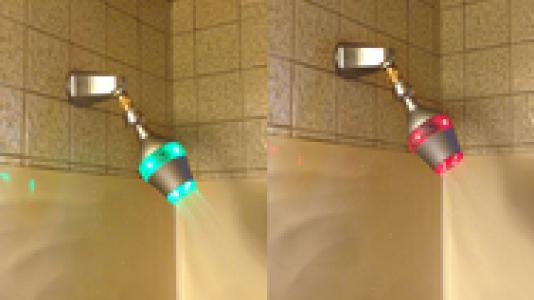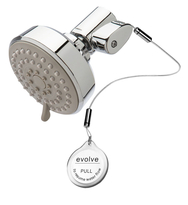
To change consumer attitudes and behavior, experts at the U.S. Department of Energy’s (DOE’s) Argonne National Laboratory have created a plan that explores technologies designed to motivate consumers to curb water use.
The plan is based, in part, on a two-day Argonne workshop held in April 2015. At the workshop, water experts and researchers from industry, government, and academia discussed solutions to this water dilemma.
The ensuing report, titled “Research and Development Opportunities to Influence Water Consumption Behavior,” examines technology characteristics that influence consumers in other areas, barriers to developing and adopting these features in the water industry, and how removing these barriers may affect U.S. water consumption.
What technology features can we take from other industries to change consumers’ water habits? Effective features, said study authors Todd Levin, Ralph Muehleisen, and Robert Horner, include better, more frequent access to data, identifying easy ways for consumers to use less water, involving family and friends to encourage accountability and adopting technology such as smart meters and apps into everyday routines.
Examples of technology that aims to curb water use include a color-changing showerhead with lights that switch from green to red during showers. This simple hint can cut shower times by 10 percent, claim its developers. Another new technology is a thermostatic shut-off value that stops water flow once it warms up to the right temperature. This saves water when customers wait for warm water but don’t realize it has arrived.
These technologies are compelling but may not gain traction because of some barriers that block development and adoption, said the study’s authors. Low water prices, for example, discourage consumers from limiting use. Consumers also lack accurate and updated information about water prices and consumption, which deters awareness and engagement.
Other barriers include a patchwork of more than 50,000 water utilities in the United States, complicating any regulatory efforts toward reform. And although the power sector has begun separating revenue from consumer use, the water utilities’ revenue is typically linked to volume, leaving no motivation for utilities to encourage consumers to save water.
Fortunately, there are several opportunities to overcome these barriers, according to the study’s authors. By combining smart, cheap, real-time water meters with existing technology and infrastructure, the industry can help utilities design conservation programs and inspire consumers to reduce water use.
“Water is several years behind electricity in terms of monitoring data,” says Levin. “Better access to data will help utilities and consumers [monitor and reduce water consumption].”
The industry could also reduce the U.S. water consumption up to 15% — more than one trillion gallons — by creating sensors to quickly pinpoint leaks and defects in the system.
Yet technology alone is no panacea, stress the study’s authors. Industry reforms such as higher rates and block pricing — additional fees beyond a certain threshold — could transform customer behavior. In addition, launching a single conservation program across many water systems could simplify efforts and lower program costs.
To accomplish their goals, Levin and his colleagues realize they must also educate consumers and better understand behavioral science. Just as miles per gallon (mpg) is known to all drivers, the study’s authors hope gallons per minute (gpm) will eventually strike a similar chord with consumers. Meanwhile, researchers must rigorously examine how consumer behavior can shift by changing perceptions, limiting choice, and tapping into consumers’ competitive nature.
Levin and his colleagues call for additional workshops and research to further explore these opportunities and help the water industry catch up to other areas.
The report was funded by the U.S. Department of Energy’s Building Technologies Office.
Argonne National Laboratory seeks solutions to pressing national problems in science and technology. The nation’s first national laboratory, Argonne conducts leading-edge basic and applied scientific research in virtually every scientific discipline. Argonne researchers work closely with researchers from hundreds of companies, universities, and federal, state and municipal agencies to help them solve their specific problems, advance America’s scientific leadership and prepare the nation for a better future. With employees from more than 60 nations, Argonne is managed by UChicago Argonne, LLC for the U.S. Department of Energy’s Office of Science.
The U.S. Department of Energy’s Office of Science is the single largest supporter of basic research in the physical sciences in the United States and is working to address some of the most pressing challenges of our time. For more information, visit the Office of Science website.
